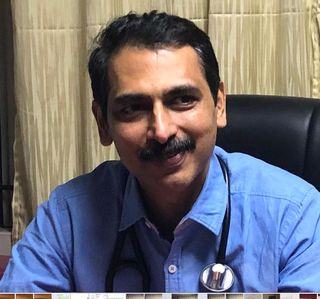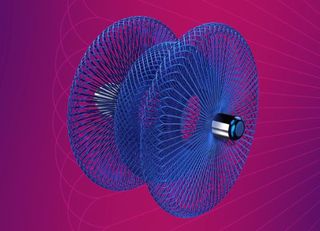Every year, more than 2,40,000 children are born with congenital heart defects in India. And, one in five such children would need early intervention to survive the first year of life. Yashbin, son of Dileep and Reshma—born at 27 weeks in the CIMAR Edappal Hospital in Kerala—was one such child.
He was just 960g at birth and required continuous ventilation for more than 40 days. An echocardiogram revealed the boy was suffering from a condition called patent ductus arteriosus (PDA)—the presence of a fatal opening between two major arteries (the aorta and the pulmonary artery) that carry blood away from the heart.
Before birth, the ductus arteriosus in the foetus is kept open by certain body chemicals to receive oxygen directly from the mother’s placenta, bypassing the lungs. Once born, the child should start breathing using the lungs, and the ductus arteriosus—which is no longer needed—should close. PDA arises if this does not happen spontaneously. A large PDA would allow oxygen-rich blood from the aorta to mix with oxygen-poor blood in the pulmonary artery. This would result in too much blood flowing into the lungs. Such a condition would put a strain on the heart and increase blood pressure in the pulmonary arteries. This has the potential to cause heart failure.
PDA is one of the common congenital heart defects in preterm babies. The incidence of PDA ranges from 15 to 37 per cent in newborn babies weighing less than 1,750g. Overall, PDA constitutes 5 to 10 per cent of all congenital heart defects with a prevalence of “symptomatic” PDA being 0.5 per 1,000 live births.
The cause for PDA is still unknown. Studies have suggested that genetics may have a role in it. PDA is observed in babies with genetic disorders like Down syndrome and those with neonatal respiratory distress syndrome. It has also been seen in the babies of mothers who had measles during pregnancy.
A forceful pulse, poor growth and fast breathing are some of the common symptoms of this condition. The babies who are suffering from PDA may be non-responsive to medicine and are at high risk to undergo corrective surgery. To wean Yashbin off the ventilator, doctors considered two options: surgery, which comes with a lot of complications and risk to life; or, installing Amplatzer Piccolo Occluder, a self-expanding, trans-catheter occlusion device used for non-surgical closure of PDA. Soon, the doctors decided in favour of the second option. To install this device in the baby’s heart, he was shifted to Lisie Hospital, Ernakulam. Dr Edwin Francis, senior consultant, head of paediatric cardiology department, Lisie Hospital, did the life-saving implant in the baby.
Developed by Abbott, Amplatzer Piccolo Occluder received certification from the US Food and Drug Administration for clinical use in January 2019. It was first implanted in a child with PDA at the Le Bonheur Children’s Hospital in Tennessee in March 2019.
“Amplatzer Piccolo Occluder is the world’s first minimally-invasive medical device for the treatment of PDA,” said Dr Francis. “The Piccolo device, which is even smaller than a pea, can be implanted in the tiniest babies (weighing as little as just under 700g) and is the first transcatheter device to treat this life-threatening opening in the heart for pre-term babies. The device’s design allows the physician to insert it through the aortic or pulmonary artery of a premature infant over three days old, as well as to retrieve and redeploy the device for optimal placement.”
Post-operation, Yashbin was gradually removed from the ventilator. “It was heart-warming for our entire team to see the baby turn the corner, get extubated and put on some weight,” said Dr Francis. So far, Yashbin is the tiniest baby in India to be installed with the Piccolo device. His father, Dileep, 38, who is a goldsmith, said the child has not faced any major issues post-surgery.
Since the device is deployed with a minimally invasive procedure, artificial respiratory support to the patient can be removed soon after the procedure. “[Once done] there is no need for any additional procedures,” said Dr Francis. “Piccolo becomes part of the baby’s tissue, and once it is in place to seal the PDA, it is sealed for life. Follow-up treatment usually includes routine echocardiograms every six months for the child’s first two years of life following Piccolo implantation.”
The doctor pointed out that the implantation is not too expensive when compared with the cost that would be incurred if the baby is kept in a neonatal intensive care unit for a long period.




